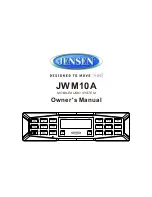
USER GUIDE
SCC-68
I/O Connector Block with 4 SCC Signal Conditioning Slots for DAQ Devices
The SCC-68 is an I/O connector block for easy signal connection to a
National Instruments M Series or E Series DAQ device. The SCC-68
features screw terminals and a general breadboard area for I/O signal
connection, and bus terminals for external power and grounding. The
SCC-68 has four SCC slots for use in integrating thermocouple, strain
gauge, RTD input, frequency input, current input, voltage attenuator,
lowpass filter, load cell input, accelerometer, feedthrough, SPDT relay,
isolated digital I/O, and isolated voltage input SCC modules into the
measurement system.
Contents
Conventions ............................................................................................ 3
Using the SCC-68 Enclosure .................................................................. 4
Opening the Enclosure..................................................................... 4
Closing the Enclosure ...................................................................... 5
Stacking and Wall Mounting ........................................................... 6
Installing Rubber Feet...................................................................... 7
Connecting to the DAQ Device .............................................................. 8
Using the SCC-68 with 16 AI Channel M Series Devices .............. 8
Using the SCC-68 with 32 AI Channel M Series Devices .............. 8
Using the SCC-68 with a 68-Pin E Series Device ........................... 9
Using the SCC-68 with the NI 6025E, NI 6033E, or NI 6071E...... 10
SCC-68 Features ..................................................................................... 11
Screw Terminals .............................................................................. 12
Device Pinouts .......................................................................... 12
Wiring to Screw Terminals....................................................... 12
Integrated Strain Relief .................................................................... 12
SCC Modules ................................................................................... 13
Breadboard Area .............................................................................. 13
Using the Temperature Sensor for Cold-Junction
Compensation (CJC) ..................................................................... 14
Cold Junction Temperature Measurement Accuracy ............... 15


































